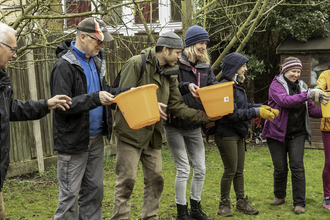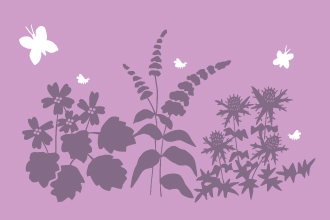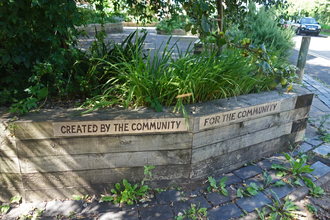Saving Worcestershire’s Heathlands is a five-year project based in the middle of Kidderminster, Bewdley and Stourport, where there is a network of heathland nature reserves. In 2021 we purchased Dropping Well Farm, which is sandwiched between heathland managed and owned by Wyre Forest District Council and Worcestershire Wildlife Trust. By acquiring this land, we have the opportunity to create a massive 600 acres of habitat and restore areas of rare heathland. As part of this project, we are working with local communities to inspire them to care for nature and to get them involved with our conservation efforts. So, alongside restoring the landscape, Joe and I were employed as engagement officers to work with groups both on and off the nature reserves.
Creating networks for wildlife
Josie's garden by Beccy Somers
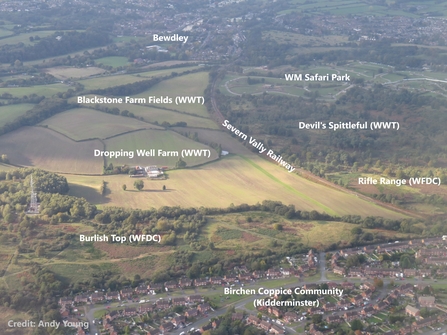
Annotated aerial photograph of Dropping Well Farm and surrounding nature reserves by Andy Young
What, though, does an engagement officer do? I work with the communities around these heathland nature reserves so a big part of my role is informing and educating people about this habitat. Heathland is so rare that even people living right on its doorstep might not know anything about it or appreciate what they look out onto. So, part of my role is attending events and giving talks to local community groups so that people can learn about this amazing rare habitat and how to enjoy it without causing any harm or disturbance to the wildlife living there.
Students from Bewdley School tree popping at Dropping Well Farm by Beccy Somers
We also invite groups on to our heathland nature reserves to experience the landscape first hand and to learn about the wildlife that lives there. We get people involved through building hibernaculums (holes in the ground filled with brash where reptiles can hide), bee and bug hotels, bee banks and by also undertaking practical conservation work. We work with individuals of all ages from school groups, youth groups and other community groups. Heathland is quite high maintenance and requires a lot of work to maintain it as a large open landscape, so we’re grateful for the help!
Our work doesn't just happen on the heathland, though; wildlife needs as much help as it can get and although our nature reserves are key areas for wildlife, we can boost biodiversity further by creating more habitats within the surrounding communities. Over time, wildlife corridors will form, acting as stepping stones for wildlife travelling through the landscape. Take a look at the map below, for example, and imagine you are an animal wanting to get from Dropping Well Farm nature reserve (A) to Vicarage Farm nature reserve (B) and you can only use greenspaces and gardens- how would you get there? Wouldn’t it be great if along the way those gardens and greenspaces provided food, shelter and water so you could safely make it to the other side? Imagine if each house on Ferguson Drive introduced one thing – one pond, one wildflower meadow, one habitat pile. This would create a safe pathway for wildlife to move between reserves.
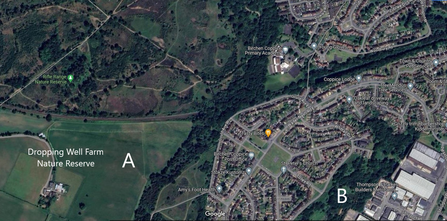
Imagery ©2024 Airbus, CNES/Airbus, Getmapping plc., Infoterra Ltd & Bluesky, Maxar Technologies, The GeoInformation Group, Map data ©2024
My role is to encourage and support people to take action for nature in any way that they can. If you have a garden, you could build a container pond or a bug hotel. If you have more time to offer, you could join or even start a community group to support nature on your local greenspace or perhaps join one of our volunteer work parties to get stuck into some practical work. It could be as simple as making sure your dog is on a lead on our nature reserves - these efforts, whether they are big or small, can make a real difference for wildlife.
What could you do to help nature in your community?


